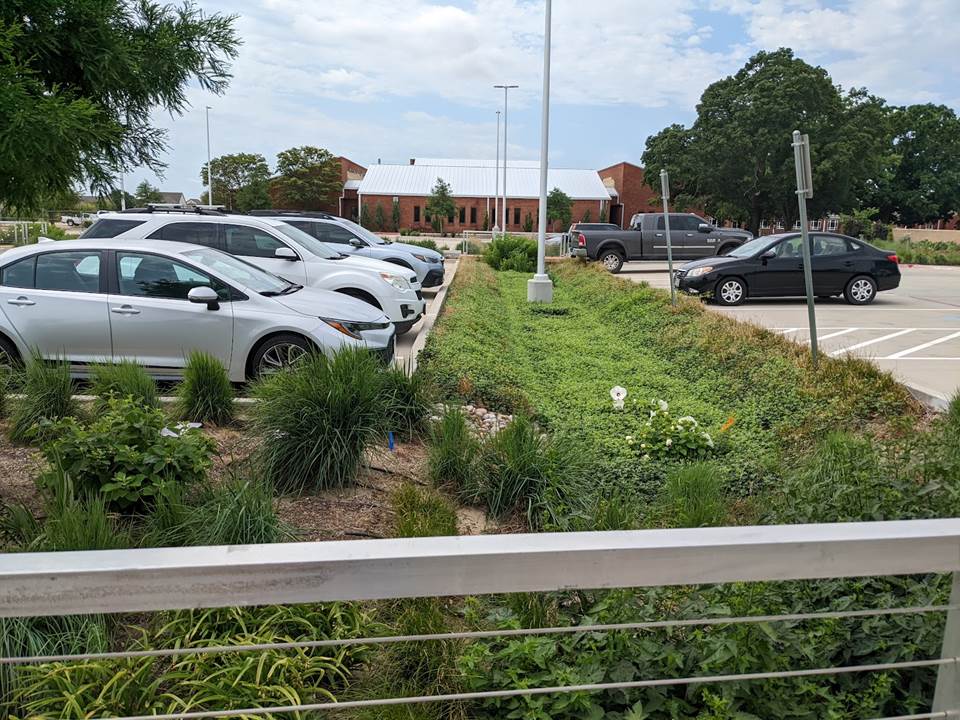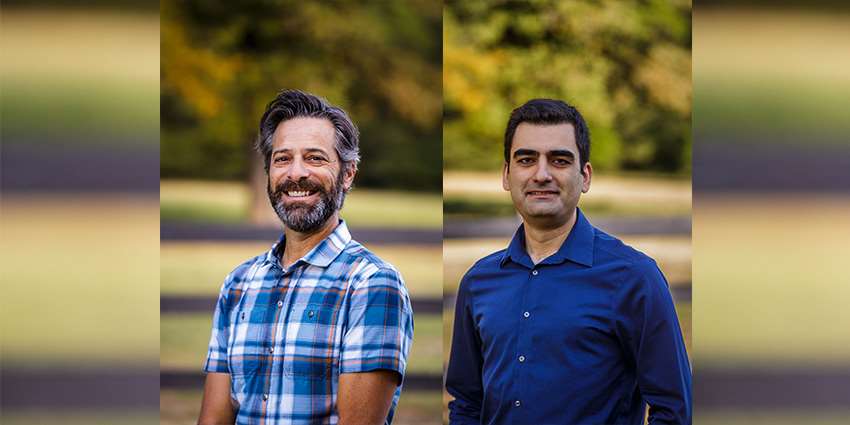Not only has population growth and aging infrastructure put a strain on existing stormwater drainage systems in Texas, but climate change impacts have also made extreme one-day rainfall events more common.
Rapid urbanization's increased impervious surfaces have sped up how fast extreme rainfall runs off into rising waterways, prompting flooding.
How should local governments deal with these compounding challenges? Local governments are searching for solutions to meet these new challenges, according to experts. Green stormwater infrastructure, GSI, can be a major part of the solution, said researchers at the Texas Water Resources Institute, TWRI, in College Station.
Although many U.S. cities have been slow to adopt, a new research review published in WIREs Water proposes strategies for municipalities and decision-makers to overcome barriers and use green stormwater infrastructure for long-term benefits.
Bardia Heidari, Ph.D., TWRI research scientist, and Dean Minchillo, Texas A&M AgriLife Extension Service specialist with TWRI, both based at the Texas A&M AgriLife Research and Extension Center in Dallas, analyzed 92 existing peer-reviewed studies to identify the barriers stopping cities from using GSI.
GSI, sometimes called blue-green infrastructure, BGI, is a major pillar of the center's research and outreach work in Dallas.
Fouad H. Jaber, Ph.D., professor in the Department of Biological and Agricultural Engineering and AgriLife Extension specialist in the Urban Ecological Engineering Program in Dallas, and Sayd Randle, Ph.D., previously a TWRI research scientist and now faculty at Singapore Management University, also co-authored the research.
What is green stormwater infrastructure?
GSI serves two main purposes for stormwater: It protects water quality by reducing and treating stormwater runoff of poor-quality water, and it manages water quantity by slowing and managing heavy rainfall, preventing or lessening flood damage.
Traditional stormwater infrastructure includes storm drains and gutters, concrete detention and retention ponds, culverts and piped drainage. Common examples of GSI are bioretention cells, rain gardens, green roofs, rainwater harvesting systems, permeable pavements and constructed wetlands.
"One advantage of GSI is that it's more visually attractive than old-school concrete ponds," Minchillo said. "And, GSI processes not only slow down stormwater but also beneficially use and diffuse it to benefit the surrounding ecosystems and landscapes."
Traditional stormwater management strategies are still necessary, they said, but adding GSI complements existing infrastructure and is cost-effective.

"The idea of traditional stormwater was, 'get the water out of my property as soon as possible, regardless of downstream impacts,'" Heidari said. "GSI can support a more holistic, watershed-wide approach."
Another advantage of GSI is that it can handle intense rainstorms better than traditional stormwater infrastructure, which can become overtaxed quickly, they said.
Why not green stormwater infrastructure?
"While there is significant acknowledgment in the scientific community on the impact of these practices, the reality is they are not widely used across the country," said Heidari, lead author of the paper.
"These nature-based solutions work—so why are they not being implemented when there's so much research showing it works?" Minchillo said.
The team found the major reasons cities were not implementing GSI were: socio-cultural; financial, institutional and governance; legislative and regulatory; technical and biophysical; and many of the factors were interrelated.
But, overcoming these barriers is feasible, they said. To increase GSI use, they recommend decision-makers:
- Increase awareness and outreach programs.
- Enhance knowledge and data co-production and dissemination.
- Acknowledge the interdependency and context-specificity of the challenges and solutions.
- Prioritize integrated and participatory watershed planning.
- Overcome institutional path dependencies.
- Prioritize innovative solutions.
- Consider maintenance protocols.
- Evaluate the role of public entities.
- Actively engage with communities.
Helping cities move forward in managing stormwater
To help cities grow their stormwater management strategy portfolios, Texas A&M AgriLife Research and AgriLife Extension staff at the center in Dallas are working on many stormwater-related projects, including the Urban WISH initiative, implementation projects for the Village Creek—Lake Arlington Watershed Protection Plan and workshops educating residents about growing regional use of such practices.
Jaber's Urban Ecological Engineering Program is renowned for assessing various practices through field experimentation and modeling, and it also holds workshops for landscape architects, city planners and engineers that cover the design, construction and maintenance of green infrastructure.
Additionally, an effort led by Texas A&M AgriLife center staff at Dallas and focused on the city of Denton, the Community-Science Partnership to Enhance Stormwater Management and Equity project, is developing innovative community partnerships and technical tools to support adaptive stormwater infrastructure and management.
"These are forward-thinking, attractive solutions," Heidari said. "We just have to get the word out and help municipalities and other decision-makers overcome these hurdles."
This article was originally published in Smart Water Magazine.

